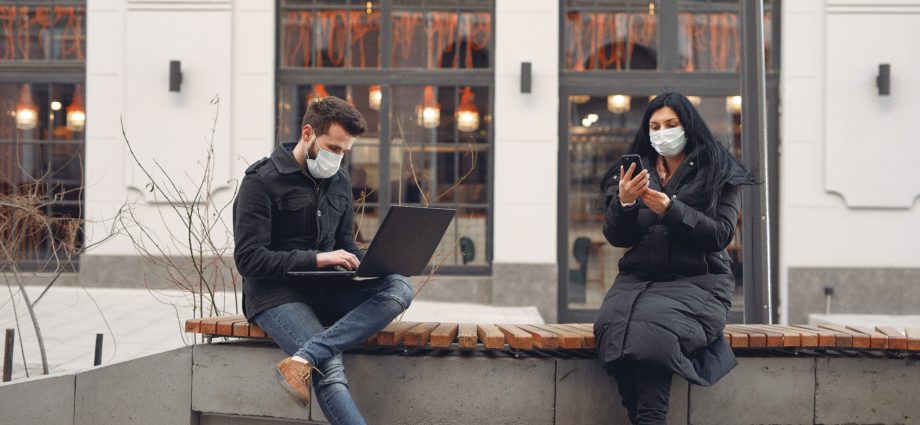Can you repeat that? Why COVID-19 face masks make it so hard to hear
Photo by Gustavo Fring from Pexels
By Yona Harvey, Local Journalism Initiative Reporter, Smiths Falls Record News
Dec 26, 2020
When Renfrew resident Christina Edgar visited the emergency department a few weeks ago, the doctor asked questions, but Edgar couldn’t understand a word.
“The doctor was impossible to understand through her mask and face shield,” she said, so the doctor finally wrote questions on a piece of paper.
At 101 years of age, Edgar confided that before the pandemic, when people didn’t wear masks, she could hear very well with a hearing aid. Now, even after turning the volume up on her hearing device, she said masked people’s voices are “indistinct.”
“I have to ask everyone to repeat everything. I keep on saying, ‘I’m sorry I cannot understand you’,” Edgar said.
“A recent Leger survey found that 50 per cent of Canadians have had more difficulty hearing now that conversational partners are wearing masks,” said Debra Wilson, audiologist at Helix Hearing Care in Perth.

“It is even a higher number for people wearing hearing aids (76 per cent),” Wilson said.
Wilson explained that people don’t realize how much they rely on lip-reading. “Now that they can’t see people’s faces, they cannot get visual cues,” she added.

Catherine Robinson, Language Express Services manager from the Leeds, Grenville and Lanark District Health Unit, said that “we all rely on facial expression.”
Masks also muffle speech, make sounds softer and eliminate high-pitched sounds (s, h, f, t and th) which are common in the English language.
“Not only are you listening through a filter, you’re also listening from a distance,” Wilson said.
With COVID-19 physical distancing measures and face mask-wearing not going away any time soon, Robinson offers suggestions to cope.
“It’s mostly about communication. People need to advocate for their needs. Say ‘I’m having problems understanding you’,” Robinson said.
Other strategies include speaking loudly, clearly and using a lot of gestures. “Have paper and pen handy, and use your eyes to show emotion,” Robinson added.
Most of all, Robinson advises for everyone to “be patient. It can be frustrating for both parties if both can’t understand.”
Different mask materials impact speech more than others. The best ones, Wilson said, are the disposable medical masks (blue masks).
Masks with plastic inserts, while great for lip-readers, block more speech, making sounds more muffled, Wilson said.
“The tricky thing is that it’s not (the person who is hard of hearing) who needs to be wearing it — it’s the other person,” Robinson explained.
Another problem brought on by masks is people losing their hearing aids more frequently.
“When they yank the mask off, the hearing aids get caught. (Hearing aids) are very expensive. It can be very emotional and stressful to be without it,” Wilson explained.
She suggests wearing masks with thinner elastics and to make sure that the elastic is on the outside of the hearing aid.
“Wait till you get inside the car (to take your mask off) so even if the hearing aid falls, it will be in the car, not in the parking lot,” she added.
Hearing aids have serial numbers and those who have lost the devices may contact an audiologist so they can help track the item. There’s also an app for finding lost hearing aids.
Wilson said that if people are experiencing other signs of hearing loss, such as people sounding like they are “mumbling,” TV volume creeping up, not hearing the doorbell, difficulty hearing in groups and with background noise — they should have their hearing checked.
“It’s painless and doesn’t take a lot of time,” she said.
Subscribe to our newsletter.
The Canadian Association of the Deaf website estimates that one in 10 Canadians (357,000) are “culturally deaf” and 3.21 million are hard of hearing. Visit http://cad.ca/issues-positions/statistics-on-deaf-canadians/
To book hearing tests, visit: http://www.language-express.ca/hearing_testing_clinics.html

